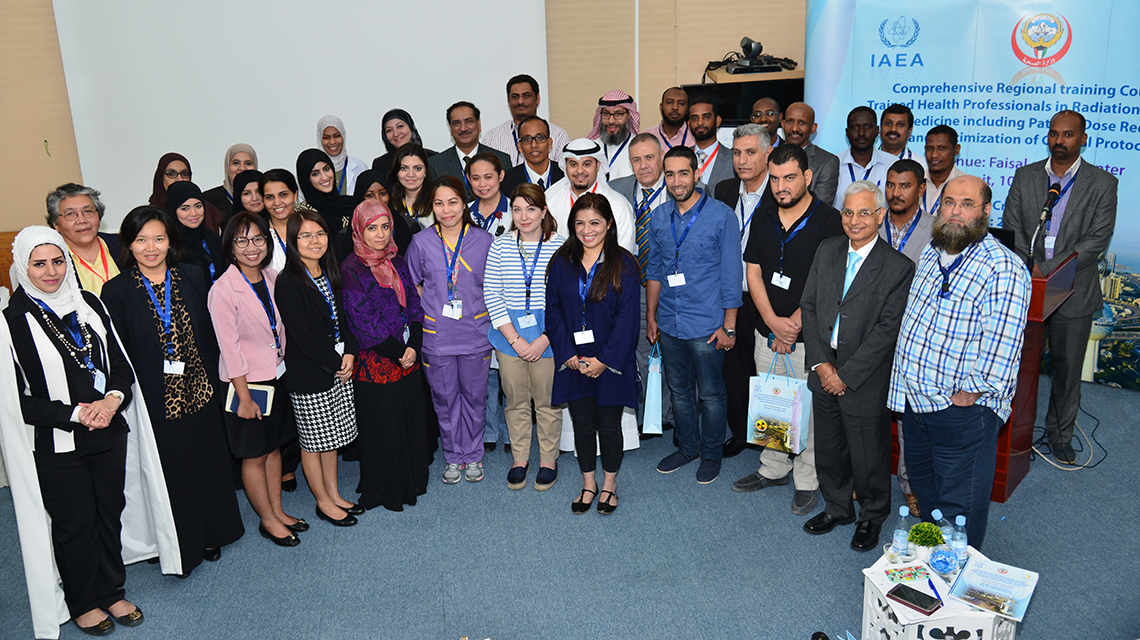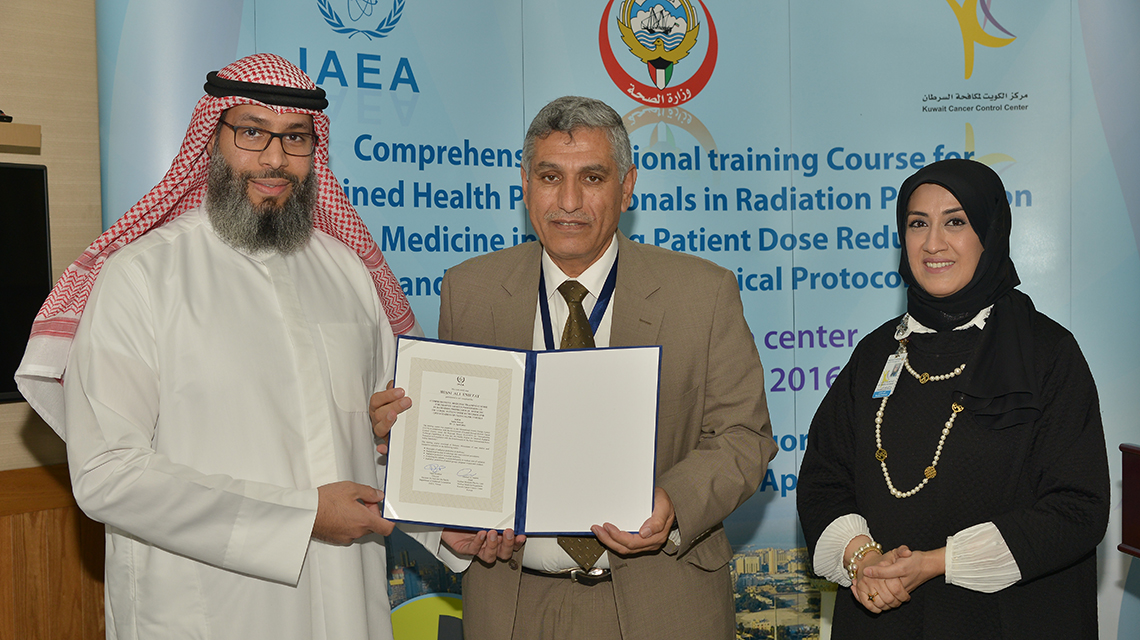This August, 70 years will have passed since the production of the world’s first radiopharmaceutical, at the Oak Ridge National Laboratory in Tennessee, United States. In the interim, the diagnostic, curative and therapeutic applications of radioisotopes have become universally recognized, and are routinely used in millions of operations annually. Without losing sight of their benefits, the IAEA works with its Member States to ensure that both patients and healthcare professionals avoid any unnecessary exposure to ionizing radiation, and to minimize the risk of accidents during medical procedures. Although many countries in Asia and the Pacific already possess the necessary legal, infrastructural and regulatory components for a strong radiation protection regime, the IAEA has issued updated international requirements which create a renewed need to strengthen safety conditions at end-user facilities such as hospitals and clinics.
Following Member State requests to stay abreast of any newly-established radiation protection guidelines, the IAEA organized a comprehensive, regional training course aimed at professionals involved in the fields of radiotherapy, nuclear medicine, dosimetry and related fields. The two-week course was held from 10 – 21 April and was organized in collaboration with the Government of Kuwait, through Kuwait Cancer Control Centre.
The 38 attending healthcare professionals and policy-makers were provided with a comprehensive and up-the-date overview of the newest requirements of the IAEA’s International Basic Safety Standards (BSS) for the protection of patients, staff and the public. Understanding that the participating Member States didn’t necessarily share the same capacities or resources, several IAEA experts were in attendance to help design and organize a national radiation protection programme for any country lacking the necessary capacities or experience. Nine Member States were represented in this training course, namely Jordan, Kuwait, Malaysia, Oman, Pakistan, Qatar, Singapore, Thailand, and the United Arab Emirates.
In addition to the detailed lectures on the latest safety requirements, the course provided an open forum for participants to explore and discuss medical case studies related to radiation protection, to participate in interactive activities, and to seek the guidance of both the visiting Malaysian, Saudi and American experts, as well as the local experts from Kuwait University and Kuwait Cancer Control Centre.
Finally, the training course incorporated several hands-on exercises which offered insights beyond the technical content of earlier presentations. As part of the course, visits were arranged to the Kuwait Cancer Control Canter, which made its cyclotron, radiopharmacy unit, and iodine-131 isolation room available for inspection and exploration by the training participants. In order to maximize the usefulness of these visits, the trainees also took part in practical exercises related to mammography, fluoroscopy, the use of CT scanners, dose calibrators, gamma cameras, and PET scanners.
Reflecting its high standard of quality, the training course was registered as an accredited CME (Continuing Medical Education) activity by the Kuwait Institute for Medical Specialisation (KIMS), allowing participants to include the training course either as a component in their residency training.
“The practical session helped us further understand and consolidate what we have learned during the lectures,” explained Mr Mohamad Fairus Bin Mohamed Zam Zam, a nuclear medicine specialist at the Singapore General Hospital and a training course attendee. Mr Zam Zam’s feedback was reflected by Ms Noreen Marwat of the Nuclear Medicine Oncology & Radiotherapy Institute of Pakistan, who said, “I was impressed by the simplicity of language used in the course, its contents and highly inspired by the in depth knowledge of lecturers. The lectures and the practical sessions were informative and very interactive.”

